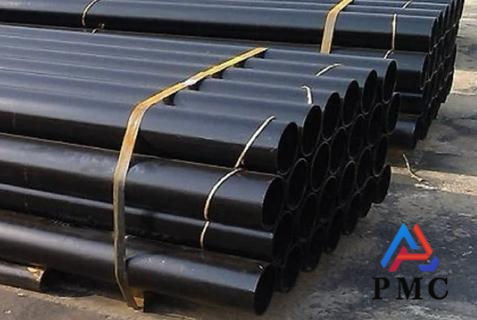
How to Ensure the Safety of Seamless Steel Pipes in Construction?
The safety of seamless steel pipes in construction is guaranteed by standardized material selection, reasonable design, strict installation, scientific maintenance and effective testing. Seamless steel pipes are widely used in high-demand construction due to their high strength, excellent pressure resistance and no welding seams. The following are the main measures to ensure the safety of seamless steel pipes in construction:
1. Choose steel pipes that meet the standards
Select steel pipes that meet the standards and ensure that the material and specifications of seamless steel pipes meet the specific needs of the project.
National standards: The manufacture of steel pipes must comply with relevant national or international standards, such as China's "GB/T 8162-2018 Seamless Steel Pipes for Structural Use", "GB/T 5310-2017 Seamless Steel Pipes for High-Pressure Boilers", etc.
Material selection: Choose suitable materials according to the purpose of the building, such as ordinary carbon steel, alloy steel or stainless steel, to meet the requirements of load-bearing, corrosion resistance or high temperature resistance.
Quality certification: Priority is given to seamless steel pipes with quality assurance and third-party testing and certification to ensure that the material performance and process are qualified.

2. Reasonable structural design
The scientificity of the design stage is crucial to the safety of seamless steel pipes.
Calculate bearing capacity: According to the actual load of the building (static load, dynamic load, wind load, snow load, etc.), calculate the required compressive strength, bending performance and fatigue resistance of the steel pipe.
Wall thickness and diameter selection: In situations with high pressure, high load or frequent vibration, select appropriate wall thickness and diameter to ensure safety.
Corrosion allowance: In an environment that may be corrosive (such as the ocean or a chemical plant), a certain corrosion allowance must be considered during design and materials with greater corrosion resistance must be selected.
Earthquake-resistant design: In earthquake-prone areas, the design must meet earthquake-resistant requirements to ensure the toughness and stability of the seamless steel pipe joints and the overall structure.
3. Strict installation and construction
The construction process is an important link that affects the safety of seamless steel pipes.
Welding and connection process: Although seamless steel pipes do not have welds themselves, they need to be connected with other pipes or components in the project. Welding operations must be completed by qualified professionals to ensure the quality of the welds.
Support and fixation: During the installation process, the support points and fixation methods should be reasonably designed to prevent deformation or breakage due to uneven force.
Avoid secondary damage: During the construction process, the seamless steel pipe must be prevented from being bumped, scratched or exposed to harsh environments, which may cause surface damage or performance degradation.
4. Regular inspection and maintenance
Condition monitoring and maintenance of seamless steel pipes during use are important links in ensuring safety.
Non-destructive testing: Regularly conduct ultrasonic testing, radiographic testing or magnetic particle testing to check whether there are cracks, internal and external wall corrosion or other defects on the seamless steel pipe.
Thickness monitoring: For pipelines that are used for a long time, especially high-pressure pipelines that carry fluids, the wall thickness needs to be measured regularly to prevent strength loss due to corrosion or wear.
Corrosion protection: In environments prone to corrosion, anti-corrosion coatings should be applied regularly or the pipelines should be cathodically protected to extend their service life.
Check the interfaces and support points: focus on monitoring whether the steel pipe connections and support points are firm, and repair them in time if looseness or cracks are found.
5. Environmental adaptation and protection measures
The use of seamless steel pipes in different environments requires appropriate protective measures to cope with the challenges brought by special environments.
Anti-corrosion treatment: Steel pipes exposed to marine, acidic, alkaline or high humidity environments need to be galvanized or sprayed with anti-corrosion coatings.
High temperature protection: In high temperature environments (such as boiler pipes), choose high temperature resistant materials (such as Cr-Mo alloy (12Cr1MoV alloy pipe, 15CrMoG alloy pipe)) and configure an insulation layer to reduce the impact of thermal expansion and contraction.
Low temperature protection: In low temperature environments (such as cold storage construction), low temperature steel pipes (such as 16MnDR) must be used to prevent material embrittlement.
External protection: When the steel pipe is exposed, a protective layer or shell should be installed to avoid external impact or environmental factors.
6. Use smart monitoring technology
In modern construction, intelligent monitoring technology is used to improve the safety management of seamless steel pipes.
Sensor monitoring: Install sensors at key pipeline locations to monitor pressure, temperature and pipeline deformation in real time.
Data analysis: Use IoT technology to analyze sensor data in real time and identify potential risks in a timely manner.
Early warning system: When the pressure or temperature of the pipeline exceeds the safe range, the early warning system can issue an alarm in time to avoid accidents.
7. Comply with building safety regulations
Ensure that the use of seamless steel pipes complies with national and industry standards, such as:
"Uniform Standard for Reliability Design of Building Structures" (GB 50068);
"Steel Structure Design Code" (GB 50017);
"Industrial Metal Pipeline Design Code" (GB 50316);
These specifications clearly define the use requirements of seamless steel pipes in different projects, from design to installation to use, ensuring safety throughout the entire process.
Read more: How to Prevent Corrosion of Seamless Steel Tubes in Construction?


